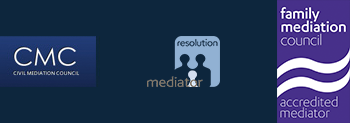Mediation – resolving problems with the help of an impartial third party – is as old as the hills and can be traced back to the teaching of Confucius in the fifth century BC in China. Although perhaps something of a recent innovation in Europe, it has long been an ingrained part of resolving disputes among the peoples of North America and the Middle East, and across much of the Far East.
Its use is now widespread in a variety of fields including family disputes, problems in the workplace, commercial disagreements, and health, education and the criminal justice system.
The mediation model was first applied to the family model in the United States where it is often known as divorce mediation, but soon made its way across the Atlantic where it was renamed family mediation. This change of title more accurately puts the process in the right context – it is not about the breakup itself, it is about the transition to a new life for all the members of a family, whatever their circumstances. The term family mediation also reflects the fact that this is not just about the two people who are separating. Family mediation also considers the effects on and the plans for children and grandparents.
In the United Kingdom, mediation began as what Lisa Parkinson, a well known author and authority on family mediation, describes ‘as a grass roots initiative’ after its use was advocated by Sir Morris Finer QC in his Report on One-Parent Families which was published in 1974. Sir Morris advocated the introduction of an alternative to the family courts in addressing the issues which inevitably arise at the end of a relationship. This he called family conciliation. This term was soon replaced with family mediation, as family conciliation perhaps sounded a little too much like reconciliation, or marriage guidance counselling.
After a successful trial in the Bristol area organised by volunteers drawn from the Social Work and Legal professions, the concept began to gain traction and to be recognised by the courts as a useful adjunct to the legal process. Family mediation allowed for the early settlement of disputes and served as a filter to remove those issues on which the participants could reach an agreement, leaving only those others where no agreement could be reached and which thus required the intervention of the Court.
The concept of family mediation spread throughout the country during the 1970s and 1980s and was codified in Part III of the Family Law Act 1996, and again in the Access to Justice Act 1999.
It is regulated by the Family Mediation Association, which is the overarching body for the regulation of the service provider organisations, and which accredits and monitors mediators’ practice throughout the country.


